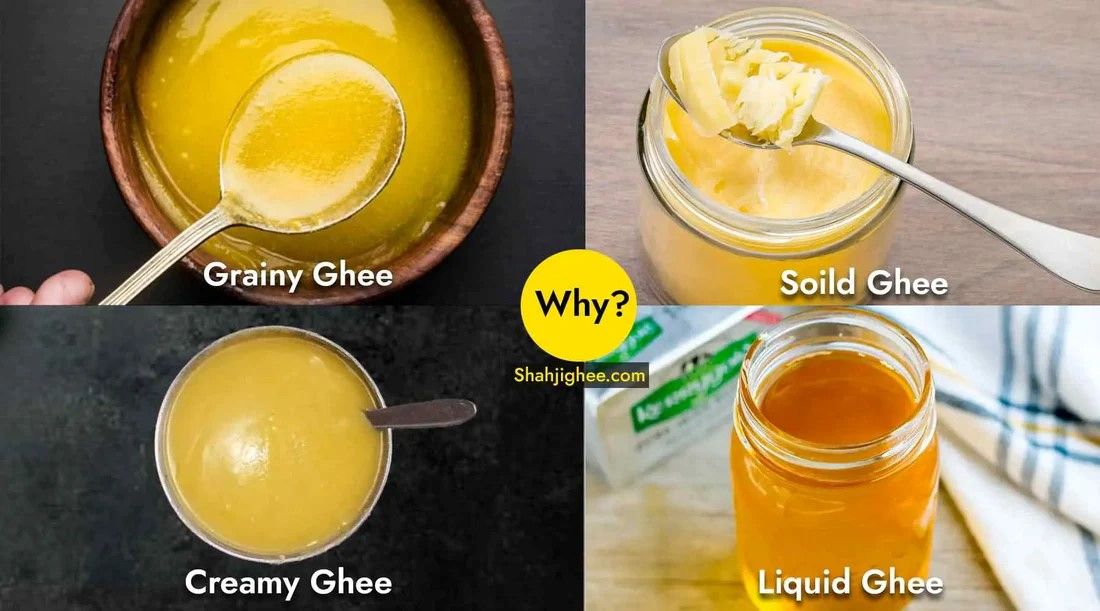Desi GHEE: UNVEILING THE MIRACULOUS ELIXIR OF HEALTH AND FLAVOUR

Introduction
Ghee is a culinary gem that is considered a Golden Elixir. Respected for its extensive health advantages, varied applications and rich history. Ghee, which is frequently praised as a wonder food in conventional Ayurvedic procedures, has crossed cultural barriers and established itself as a mainstay in kitchens everywhere. This blog delves into the wonders of Ghee, revealing its nutritional profile, historical background, and the factors contributing to its recent rebirth as a popular ingredient in food and medicine.
Ghee holds the unfortunate distinction of being one of the most misinterpreted foods in India right now. Once thought to be the diet of gods, it is today seen as a “fattening” element and may be somewhat to blame for the ailments associated with this generation’s lifestyle. Ever since the 1970s Is that really the case, though? Has our heart health truly improved since the 1970s and 1980s, when the marketing and advertising of “heart healthy” vegetable oils led a whole nation to abandon its 5000-year-old eating beliefs in favour of consuming Ghee? Do diabetes, high cholesterol, and other conditions seem to be less common now? Or did we misjudge Ghee’s designation as “saturated fat” and lump it along with hydrogenated and trans fats?
Things about Ghee that we don’t know or care to know
| Common myths regarding Ghee and the places where they should be banished
|
Ghee possesses antiviral and antibacterial qualities. It guarantees that you avoid getting sick and helps you in recovery from illness.
| Ghee is fattening – because it is lipolytic, or the breakdown of fat, by nature. Its distinct short chain fatty acid structure is the cause of this.
|
Ghee is the amazing anti-aging and anti-wrinkling treatment you’ve been looking for because of its antioxidant content.
| Ghee is a saturated fat – Although ghee has a unique structure, it is still a saturated fat and can help mobilize fat from areas of the body that are resistant to fat accumulation. Not the same as trans fats found in your cakes, pizza, biscuits, etc.
|
Ghee lubricates and oxygenates joints, making it a great choice for joint health.
| Ghee will increase cholesterol – Ghee will raise cholesterol level because it increases the amount of lipids that are used in metabolism, which lowers cholesterol. Under stress, the liver produces too much cholesterol. Ghee promotes stress relief, deeper sleep, and a more rested wake-up. |
Ghee transports nutrients from your meal through membranes that are permeable to fat, such as those found in the brain.
| Ghee is harmful for heart – Ghee is bad for the heart. Ghee is packed with antioxidants, fat-soluble vitamins (A, E, and D), and conjugated linoleic acid (CLA), which are all essential for a healthy heart.
|
Ghee guarantees that you eat the appropriate quantity of food and enhances your satiety signal.
| Ok, ok fine, Ghee is good, but must not eat it too much – Of course, ghee is healthy, but it shouldn’t be consumed in excess. Traditionally, ghee is added to every meal. The ideal amount of food is determined by its optimal flavour. You can only find out with your tongue and stomach. |
In Hinduism
IGhee is traditionally made from the milk of cows or water buffalo. Since the Vedic era, ghee has been utilized in rituals. It is a sacred prerequisite for Vedic yajña and homa (fire rituals), where oblations are offered to various deities through the medium of Agni (fire).
Ceremonies like marriage and funerals involve the use of fire rituals. In the Vedic worship of murtis (divine deities), ghee is necessary for the aarti (offering of ghee lamp) called Diya or Dipa and for Pañcāmṛta (Panchamruta), where ghee is used to bathe the deities on the day of Krishna’s appearance on Janmashtami and Śiva (Shiva) on Mahā-śivarātrī (Maha Shivaratri). A hymn is dedicated to ghee. According to the Mahabharata, pots of ghee gave birth to the Kauravas.
Nowadays, many large-scale producers add salt to their ghee, making it difficult for devout Hindus to find ghee pure enough to use for sacred purposes. In order to heat the cannabis and cause decarboxylation, which makes the beverage psychoactive, ghee is also added to bhang.
Buddhist literature uses the stages of dairy production to represent the stages of enlightenment. Sarpir-maṇḍa, the highest-stage product, is thought to be clarified butter or ghee.
Flavour
Free fatty acids, lactones, alcohols, and carbonyls are the primary flavouring ingredients of ghee. The ripening of the butter and the temperature at which it is clarified also have an impact on its flavour, in addition to the flavour of milk fat. For instance, batches made at 120 °C (248 °F) yield a strong flavour, but ghee made by clarifying butter at 100 °C (212 °F) or less has a rich, mild flavour.
Culinary Uses
Indian subcontinental cuisines, including traditional rice dishes like biryani, frequently use ghee. Ghee is served with polis, or Indian breads, in Maharashtra. For instance, a common Maharashtrian dish called “Puranpoli” is consumed with a lot of ghee. In Rajasthan, baati is frequently served with ghee. In northern India, ghee is superior to roti. Ghee is superior to dosa and kesari bhath in Tamil Nadu and Karnataka. Khichdi, a traditional evening meal in Bengal (West Bengal and Bangladesh) and Gujarat, consists of rice and lentils cooked in a curry made with yogurt (dahi), cumin seeds, curry leaves, cornflour, turmeric, garlic, salt, and ghee. Moreover, it is a component of kadhi and Indian desserts like Mysore pak, halva, and laddu.
Indian restaurants usually use a lot of ghee, sometimes smearing it on naan and roti right before serving or even during preparation. Ghee is frequently used in regional Odia cuisines like Khichdee and Dalma in the state of Odisha. Ghee is a key component of the cuisine of most Odishai temples, especially when it comes to the satwik style of food. In South Indian cooking, ghee is frequently used to temper curries and prepare rice dishes and desserts. Rice is traditionally eaten with pickles and curries after being topped with ghee, according to South Indian customs. One of the largest groups of ghee consumers is South Indians. Particularly in Andhra Pradesh, ghee is used in the cooking of both savoury and sweet foods. Traditional North Indian dishes like parathas, daals, and curries frequently use ghee in place of oil for a deeper flavour. When it comes to the animal source, ghee tends to change depending on the dish. For instance, ghee made from cow’s milk (Bengali: গাওয় ঘী, gaoa ghi) is traditionally served with rice or roti, or as a final drizzle over a curry or daal (lentils), while ghee made from buffalo milk is more commonly used in general cooking.
Because of its high smoke point of 250 °C (482 °F), which is far higher than most vegetable oils and average cooking temperatures of about 200 °C (392 °F), ghee is the perfect fat for deep frying.
• Why is ghee crucial to a diet?
• What advantages does ghee have for your health?
Excellent skin, well-lubricated joints, enhanced memory, heart health, fertility, immunity, and everything in between. Assimilation of vitamin D is extremely important these days, as vitamin D deficiency is the rich man’s new disease.
• What is the recommended daily intake of ghee?
As much as one want, as much as is required or necessary to bring out the best taste, flavour, aroma and texture of food.
• A wide variety of ghee is available in the market. Which kind of ghee is ideal?
The best is the one made at home with all the procedures followed, including boiling and heating the mixture after it has been distilled or purified from milk to malai and from malai to butter. Here, it’s crucial to keep in mind that the milk should originate from Indian cows, also known as desi cows, who roam the fields and feed on wholesome grass. Not the hormone- and corn-fed Jersey cow you saw in the DDLJ film. Here, the order of importance is Indian cow, buffalo, and Jersey cow.
• What considerations should one make when purchasing ghee?
As previously asked, let me just add that it is made from Indian cow milk and that the butter is churned during the process rather than being heated or melted.
• There is an opposing argument that ghee causes cardiovascular diseases and is bad for overweight individuals. In what way would you react to that?
People mistake ghee for any other type of saturated fat, which is why there is a debate. They will discover that not all fat is created equal, just as they have discovered that not all fat is harmful. This includes saturated fat. While it makes sense to stay away from saturated fat found in “fibre rich” biscuits and “iron enriched” cereals, it’s crucial to realize that ghee contains a different type of saturated fat than packaged and processed foods. Ghee’s carbon atom structure is incredibly unusual; it is far smaller than the typical, frequently occurring, and understandably feared forms.
The healing, almost magical qualities of ghee are attributed to this special carbon atom chain. The “debate” results from incomplete knowledge that ignores fundamental concepts in chemistry.
•How should ghee be incorporated into a regular diet?
Ghee is a very adaptable ingredient that works well for deep-frying, tadka, or adding taste to dals, rotis, parathas, and other dishes. As a relaxant, you could even apply it to your head or toes; it’s more effective than sleeping pills. Because of its high smoking point, you can enjoy it hot, warm, or cold depending on your personal preferences and the type of food being served.
Usually, ghee comes in airtight glass jars for packaging. They should be shielded from the sun’s rays to prevent moisture from building up inside the jar. Moisture can shorten the ghee’s shelf life and cause quality degradation. They should be shielded from anything that accelerates the oxidation process, like UV radiation from fluorescent lights and sunshine. If the previously listed requirements are satisfied, an unopened jar can be stored without refrigeration. They keep well for up to three months when kept in a kitchen cabinet after they are opened. It can then be stored in the fridge for a maximum of one year. Ghee gets harder in the fridge.
What our traditional knowledge of food tells us: Runam krutva, ghrutam pibet meaning borrow money, but consume ghee. Cook in it or add to food that has already been cooked, and it will keep blessing you. Indeed, homemade ghee made from Indian cow’s milk tastes the best. Ghee made from buffalo milk is a respectable alternative. Ghee and jersey cow milk don’t provide the advantages you want. Sadly, that means the Tetra packed milk is out of the question.
You can help preserve the Indian cow by supporting a Gou Shala.
Gou Shalas, also known as cow shelters or sanctuaries, are institutions in India that provide care and protection to cows, especially those that are old, sick, abandoned, or injured. Supporting Gou Shalas can indeed contribute to the preservation and welfare of indigenous Indian cow breeds.
Here are several ways you can support Gou Shalas and help preserve Indian cows:
1. Volunteer. Offer your time and skills by volunteering at a Gou Shala. You can assist with feeding the cows, cleaning their living spaces, providing medical care, or helping with administrative tasks.
2. Donate. Gou Shalas often rely on donations to sustain their operations. You can contribute funds, food, medicines, or other essential supplies for the well-being of the cows.
3.Raise Awareness. Spread awareness about the importance of preserving indigenous Indian cow breeds. Educate others about the significance of cows in Indian culture and the need to protect them.
4. Advocate. Advocate for policies and regulations that protect cows and support Gou Shalas. Encourage local authorities and communities to provide assistance and resources to these shelters.
5.Promote Sustainable Practices. Encourage sustainable practices that involve cows, such as organic farming, biogas production, and using cow dung and urine for agricultural purposes.
6. Support Indigenous Cow Products. Purchase products made from indigenous cow breeds, such as milk, ghee, or Ayurvedic medicines, to support the economic viability of these breeds and the farmers who rear them.
Remember that supporting Gou Shalas is not just about protecting cows but also about upholding cultural traditions, promoting sustainable agriculture, and ensuring the well-being of communities that rely on these animals for various purposes.
However, before supporting any organization or cause, it’s advisable to research and verify their legitimacy to ensure your contribution is being utilized for the intended purpose.
For those outside of India: Take the most convenient route, but begin putting in a demand for Indian butter and cow’s milk, particularly in a nation where the “customer is king”.

Related Posts
Leveraging AI for Office Productivity
Artificial Intelligence (AI) is the simulation of human intelligence processes by machines, enabling them to perform tasks that typically require human intelligence, such as learning,

Top 6 Career Options in Engineering After Class 12th – Geeta University
Top 6 Career Options in Engineering After Class 12th – Geeta University One of the most popular fields for undergraduate study is engineering. There are

How Color Influences Guest Experience in Hotels
THE PALETTE OF EMOTIONS: HOW COLOR INFLUENCES GUEST EXPERIENCE IN HOTELS Any hotel lobby will have carefully chosen colors for the walls, furnishings, and other


